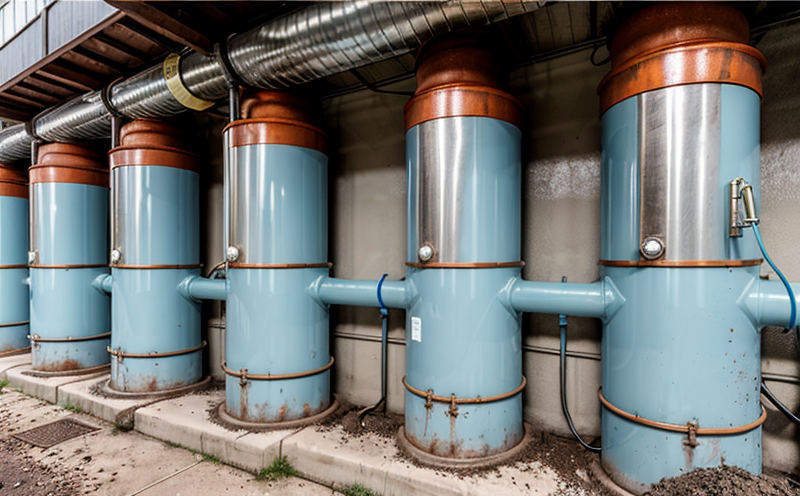ASTM D511 Calcium and Magnesium Hardness Test in Water
The ASTM D511 calcium and magnesium hardness test is a critical analytical procedure used to determine the concentration of these two major divalent cations present in water. This test is particularly important for industries dealing with water systems, as it helps identify the levels of hardness that can affect equipment integrity, operational efficiency, and product quality.
Water hardness is primarily caused by dissolved calcium (Ca2+) and magnesium (Mg2+) ions. These ions interact with other chemicals in water to form deposits or scale, which can lead to various issues such as reduced heat transfer efficiency, increased energy consumption, and accelerated wear on equipment. By measuring the hardness of water using ASTM D511, industries can proactively manage these risks.
The test is widely used across sectors including power generation, pharmaceuticals, food and beverage processing, and manufacturing. In each of these sectors, understanding water quality is essential for maintaining optimal operational conditions and ensuring product purity and safety.
The ASTM D511 method involves titrating a sample with EDTA (ethylenediaminetetraacetic acid) until the characteristic color change occurs, indicating the endpoint. The concentration of calcium and magnesium ions can then be calculated based on the volume of EDTA used during this titration.
Proper execution of ASTM D511 requires precise sample preparation to ensure accurate results. This includes ensuring that the water sample is representative of the overall system being tested, free from contamination, and at a consistent temperature throughout the test process. The use of appropriate reagents and equipment also plays a crucial role in obtaining reliable data.
The significance of this test extends beyond just identifying the presence of calcium and magnesium ions. It provides valuable insights into the potential for scaling or corrosion within water systems. By monitoring these parameters, stakeholders can implement preventive measures such as chemical treatment, filtration, or other intervention strategies to mitigate adverse effects on equipment and processes.
Accurate determination of calcium and magnesium hardness is essential for industries that rely heavily on water quality. For instance, in the pharmaceutical sector, poor control over water hardness could lead to impurities in final products, while in food processing, it may result in changes to product consistency or flavor profiles.
| Applied Standards |
|---|
| ASTM D511 – Standard Practice for Determination of Calcium and Magnesium Hardness by EDTA Titration |
The application of ASTM D511 is not limited to any specific industry but rather serves as a universal method applicable across various sectors where water quality plays a critical role. By adhering to this standard, laboratories ensure consistency and reliability in their measurements, thereby contributing to better decision-making processes within organizations.
Applied Standards
- ASTM D511 – Standard Practice for Determination of Calcium and Magnesium Hardness by EDTA Titration
Scope and Methodology
The ASTM D511 method focuses on determining the total concentration of calcium (Ca2+) and magnesium (Mg2+) ions in water samples through a titration process using ethylenediaminetetraacetic acid (EDTA). This approach provides reliable quantitative results that are crucial for assessing water quality.
The test procedure begins with the collection of representative water samples from different locations within the system under study. These samples should be free from external contaminants and kept at a consistent temperature until analysis. Prior to titration, dilution may be necessary depending on the expected hardness levels in order not to exceed the linear range of the instrument used.
The actual titration process involves adding known amounts of EDTA solution dropwise into the prepared water sample while monitoring the pH changes caused by this interaction. A change in color or other visual indicators signals the endpoint, marking the completion of the reaction between the metal ions and EDTA. At this point, further additions of EDTA are ceased.
The volume of EDTA required to reach the endpoint is directly proportional to the amount of calcium and magnesium present initially in the sample. Using calibration curves derived from standard solutions with known concentrations, analysts can calculate the total hardness expressed as milligrams per liter (mg/L) of CaCO3.
This method allows for accurate quantification even when dealing with complex water matrices containing multiple dissolved components that might interfere with other analytical techniques. Its simplicity and repeatability make it an ideal choice for routine monitoring purposes.
Customer Impact and Satisfaction
- Improved Equipment Performance – By managing calcium and magnesium levels effectively, industries can extend the life span of their equipment by minimizing corrosion and scaling.
- Enhanced Product Quality – Ensuring optimal water hardness prevents contamination risks which could otherwise affect product integrity.
- Cost Savings – Regular monitoring helps avoid costly repairs due to premature failure of components caused by hard water conditions.
- Compliance Assurance – Following internationally recognized standards like ASTM D511 ensures that all testing procedures meet regulatory requirements, thus reducing legal liabilities.





